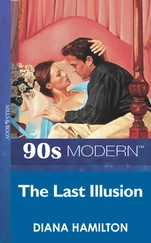Bruce Hood - The Self Illusion
Здесь есть возможность читать онлайн «Bruce Hood - The Self Illusion» весь текст электронной книги совершенно бесплатно (целиком полную версию без сокращений). В некоторых случаях можно слушать аудио, скачать через торрент в формате fb2 и присутствует краткое содержание. ISBN: , Издательство: Constable & Robinson, Жанр: Старинная литература, на английском языке. Описание произведения, (предисловие) а так же отзывы посетителей доступны на портале библиотеки ЛибКат.
- Название:The Self Illusion
- Автор:
- Издательство:Constable & Robinson
- Жанр:
- Год:неизвестен
- ISBN:9781780331379
- Рейтинг книги:5 / 5. Голосов: 1
-
Избранное:Добавить в избранное
- Отзывы:
-
Ваша оценка:
- 100
- 1
- 2
- 3
- 4
- 5
The Self Illusion: краткое содержание, описание и аннотация
Предлагаем к чтению аннотацию, описание, краткое содержание или предисловие (зависит от того, что написал сам автор книги «The Self Illusion»). Если вы не нашли необходимую информацию о книге — напишите в комментариях, мы постараемся отыскать её.
The Self Illusion — читать онлайн бесплатно полную книгу (весь текст) целиком
Ниже представлен текст книги, разбитый по страницам. Система сохранения места последней прочитанной страницы, позволяет с удобством читать онлайн бесплатно книгу «The Self Illusion», без необходимости каждый раз заново искать на чём Вы остановились. Поставьте закладку, и сможете в любой момент перейти на страницу, на которой закончили чтение.
Интервал:
Закладка:
37. E. van Dijk and D. van Knippenberg, ‘Trading wine: On the endowment effect, loss aversion, and the comparability of consumer goods’, Journal of Economic Psychology , 19 (1998), 485–95; J. L. Knetsch, ‘The endowment effect and evidence of non-reversible indifference curves’, American Economic Review , 79 (1989), 1277–84.
38. J. R. Wolf, H. R. Arkes and W. A. Muhanna, ‘The power of touch: An examination of the effect of duration of physical contact on the valuation of objects’, Judgment and Decision Making , 3 (2008), 476–82.
39. B. Knutson, G. E. Wimmer, S. Rick, N. G. Hollon, D. Prelec and G. Loewenstein, ‘Neural antecedents of the endowment effect’, Neuron , 58 (2008), 814–22.
40. A. Kogut and E. Kogut, ‘Possession attachment: Individual differences in the endowment effect’, Journal of Behavioral Decision Making (20 April 2010): doi:10.1002/bdm.698.
41. M. Wallendorf and E. J. Arnould, ‘“My favorite things”: A cross-cultural inquiry into object attachment, possessiveness, and social linkage’, Journal of Consumer Research , 14 (1988), 531–47.
42. C. L. Apicella, E. M. Azevedo, N. Christakis and J. H. Fowler, ‘Isolated hunter-gatherers do not exhibit the endowment effect bias’ Invited talk: New York University for Neuroeconomics, New York.
43. M. H. Kuhn and T. S. McPartland, ‘An empirical investigation of self-attitude’, American Sociological Review , 19 (1954), 68–76.
44. W. M. Maddux, H. Yang, C. Falk, H. Adam, W. Adair, Y. Endo, Z. Carmon and S. J. Heine, ‘For whom is parting with possessions more painful? Cultural differences in the endowment effect’, Psychological Science , 21 (2010), 1910–17.
45. A. P. Bayliss, A. Firschen, M. J. Fenske and S. P. Tipper, ‘Affective evaluations of objects are influenced by observed gaze direction and emotional expression’, Cognition , 104 (2007), 644–53.
6 How the Tribe Made Me
1. R. C. Kessler, P. Berglund, O. Demler, R. Jin and E. E. Walters, ‘Lifetime prevalence and age-of-onset distributions of DSM-IV disorders in the National Comorbidity Survey Replication’, Archives of General Psychiatry , 62 (2005), 593–602.
2. R. B. Zajonc, ‘Social facilitation’, Science , 149 (1965), 269–74.
3. G. Porter, B. M. Hood, T. Troscianko and C. N. Macrae, ‘Females, but not males, show greater pupillary response to direct than deviated gaze faces’, Perception , 35 (2006), 1129–36.
4. J. W. Michaels, J. M. Blommel, R. M. Brocato, R. A. Linkous and J. S. Rowe, ‘Social facilitation and inhibition in a natural setting’, Replications in Social Psychology , 2 (1982), 21–4.
5. S. J. Karau and K. D. Williams, ‘Social loafing: A meta-analytic review and theoretical integration’, Journal of Personality and Social Psychology , 65 (1993), 681–706.
6. S. Moscovici and M. Zavalloni, ‘The group as a polarizer of attitudes’, Journal of Personality and Social Psychology , 12 (1969), 125–35.
7. I. Janis, Groupthink (New York, NY: Houghton Mifflin Company, 1982).
8. ‘DJ condemned for playing Van Halen’s Jump as woman leaps from bridge’, Daily Mail (18 January 2010).
9. L. Mann, ‘The baiting crowd in episodes of threatened suicide’, Journal of Personality and Social Psychology , 41 (1981), 703–9.
10. T. Postmes and R. Spears, ‘Deindividuation and antinormative behavior: A meta-analysis’, Psychological Bulletin , 123 (1998), 238–59.
11. M. Bateson, D. Nettle and G. Roberts, ‘Cues of being watched enhance cooperation in a real-world setting’, Biology Letters , 2:3 (2006), 412–14.
12. E. Diener and M. Wallbom, ‘Effects of self-awareness on antinormative behavior’, Journal of Research in Personality , 10 (1976), 107–11.
13. V. Bell, ‘Riot psychology’, blog posted on the Mind Hacks website (2011), www.mindhacks.com.
14. T. Postmes and R. Spears (1998).
15. P. Rochat, Others in Mind (Cambridge: Cambridge University Press, 2010).
16. National Institutes of Health, ‘Bullying widespread in US schools, survey finds’, National Institutes of Health press release (24 April 2001), www.nichd.nih.gov/news/releases/bullying.cfm.
17. N. R. Crick and J. K. Grotpeter, ‘Relational aggression, gender, and social-psychological adjustment’, Child Development , 66 (1995), 710–22.
18. N. I. Eisenberger, M. D. Lieberman and K. D. Williams, ‘Does rejection hurt? An FMRI study of social exclusion’, Science , 302 (2003), 290–92.
19. R. F. Baumeister, C. N. Dewall, N. J. Ciarocco and J. M. Twenge, ‘Social exclusion impairs self-regulation’, Journal of Personality and Social Psychology , 88 (2005), 589–604.
20. K. D. Williams and S. A. Nida, ‘Ostracism: consequences and coping’, Current Directions in Psychology , 20 (2011), 71–5.
21. M. Gruter and R. D. Masters (eds), ‘Ostracism: A social and biological phenomenon’, Ethology and Sociobiology , 7 (1986), 149–395.
22. K. D. Williams, ‘Ostracism: A temporal need-threat model’, in M. Zanna (ed.), Advances in Experimental Social Psychology (New York, NY: Academic Press, 2009), 279–314.
23. W. A. Warburton, K. D. Williams and D. R. Cairns, ‘When ostracism leads to aggression: The moderating effects of control deprivation’, Journal of Experimental Social Psychology , 42 (2006), 213–20.
24. M. R. Leary, R. M. Kowalski and L. Smith, ‘Case studies of the school shootings’, Aggressive Behavior , 29 (2003), 202–214.
25. Telegram to the Friar’s Club of Beverly Hills, as recounted in G. Marx, Groucho and Me (New York, NY: B. Geis, 1959), 321.
26. A. Bandura, B. Underwood and M. E. Fromson, ‘Disinhibition of aggression through diffusion of responsibility and dehumanization of victims’, Journal of Research in Personality , 9 (1975), 253–69.
27. H. Tajfel, M. G. Billig, R. P. Bundy and C. Flament, ‘Social categorization and intergroup behaviour’, European Journal of Social Psychology , 1 (1971), 149–78.
28. W. Peters, A Class Divided, Then and Now (Expanded ed., New Haven, CT: Yale University Press, 1987).
29. M. B. Brewer, ‘The social self: On being the same and different at the same time’, Personality and Social Psychology Bulletin , 17 (1991), 475–82.
30. S. E. Asch, ‘Studies of independence and conformity: 1. A minority of one against a unanimous majority’, Psychological Monographs: General and Applied , 70 (1956), 1–70.
31. D. K. Campbell-Meiklejohn, D. R. Bach, A. Roepstorff, R. J. Dolan and C. D. Frith, ‘How the opinion of others affects our valuation of objects’, Current Biology , 20 (2010), 1165–70; J. Zaki, J. Schirmer and J. P. Mitchell, ‘Social influence modulates the neural computation of value’, Psychological Science , 22 (2011), 894–900.
32. P. Zimbardo, The Lucifer Effect: How Good People Turn Evil (London: Random House, 2007).
33. S. Reicher and S. A. Haslam, ‘Rethinking the psychology of tyranny: The BBC prison study’, British Journal of Social Psychology , 45 (2006), 1–40.
34. Cool Hand Luke (1967), directed by Stuart Rosenberg, Warner Brothers.
35. S. Milgram, ‘Behavioral study of obedience’, Journal of Abnormal and Social Psychology , 67 (1963), 371–8.
36. C. L. Sheridan and R. G. King, ‘Obedience to authority with an authentic victim’, Proceedings of the Annual Convention of the American Psychological Association , 7: 1 (1972), 165–6.
Читать дальшеИнтервал:
Закладка:
Похожие книги на «The Self Illusion»
Представляем Вашему вниманию похожие книги на «The Self Illusion» списком для выбора. Мы отобрали схожую по названию и смыслу литературу в надежде предоставить читателям больше вариантов отыскать новые, интересные, ещё непрочитанные произведения.
Обсуждение, отзывы о книге «The Self Illusion» и просто собственные мнения читателей. Оставьте ваши комментарии, напишите, что Вы думаете о произведении, его смысле или главных героях. Укажите что конкретно понравилось, а что нет, и почему Вы так считаете.












